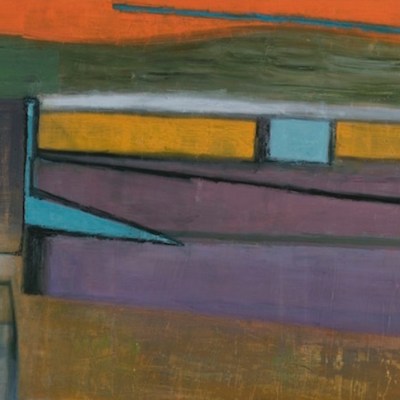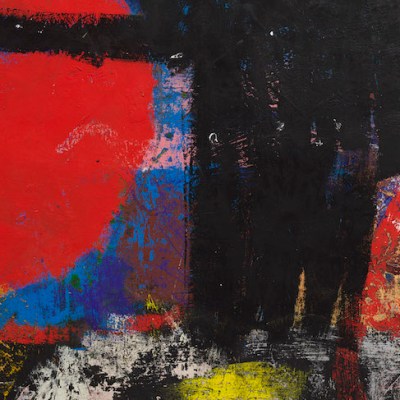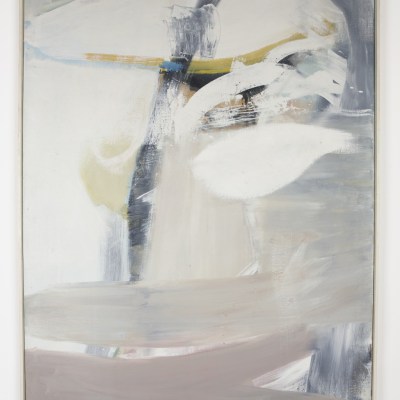In The Irascibles, an arresting photograph published by Life magazine in 1951, the artists of the New York School, all but one of them men, are arranged around a brooding Jackson Pollock. Standing slightly – and perhaps tellingly – at the periphery is the dapperly dressed Richard Pousette-Dart (1916–1992). Four years younger than Pollock, Pousette-Dart had broken new ground at the dawn of Abstract Expressionism, but he then retreated from the group, both philosophically and geographically, to pursue his own singular vision.
‘I strive to express the spiritual nature of the universe,’ said the self-taught artist in 1947. His contribution remains little-known this side of the Atlantic; this retrospective at Kettle’s Yard – the only art collection in the UK to hold any of his works – is his first solo show in this country. A mutual admiration for the sculptors Constantin Brancusi and Henri Gaudier-Brzeska first brought Pousette-Dart into contact with Jim Ede, the founder of Kettle’s Yard. But it was a deep appreciation of nature and a shared belief in the transcendent quality of art that cemented their long friendship, which was largely conducted through letters and spanned four decades.
Self-Portrait (c. 1940), Richard Pousette-Dart. The Richard Pousette-Dart Estate
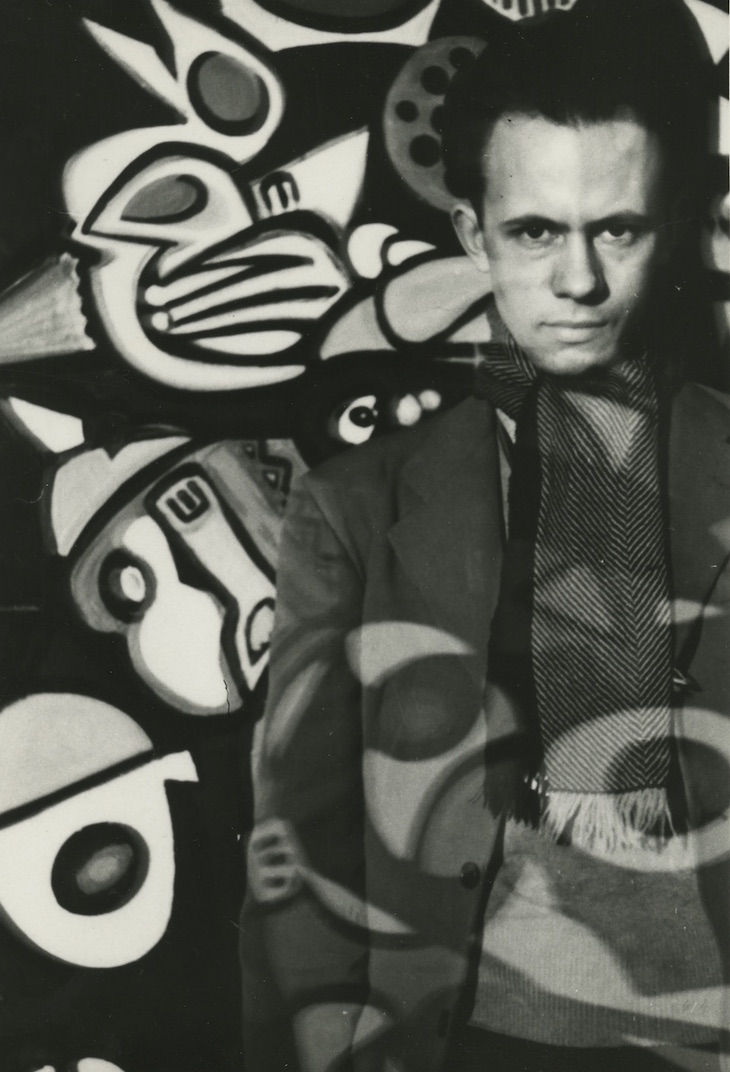
The exhibition includes drawings and sculptures inspired by Gaudier-Brzeska; atmospheric, multi-layered photographic portraits; and densely packed paintings that reveal a passion for Picasso yet are filled with Native American iconography and calligraphic lines, which explode like fireworks from underlying compositional grids. Paintings such as Untitled (1940) and Within the Room (1942) seem to be clear precursors to such early Pollock works as Male and Female (1942) – and are at least as visually striking. Pousette-Dart’s vast Symphony No. 1, The Transcendental was the first mural-sized painting to emerge from the New York School, influencing Pollock’s famous Mural (1943) for Peggy Guggenheim.
Within the Room (1942), Richard Pousette-Dart. Whitney Museum of American Art, New York
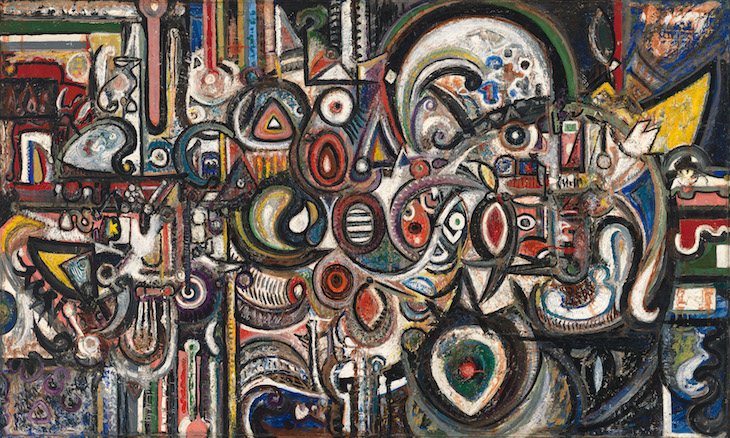
In immaculately crafted brass sculptures, Pousette-Dart depicted the Egyptian symbol Ankh, beaked birds’ heads, fish, and fertility goddesses. Their shapes reappear in his paintings of the same period, predating by decades the archetypal symbols deployed by Alan Davie, A.R. Penck or Jean-Michel Basquiat. The gnarled, organic forms of Crucifixion, Comprehension of the Atom (1944) could be the offspring of an encounter between Guernica, a stained glass window, and a painting by Graham Sutherland. Pousette-Dart’s natural forms pulse with a threatening, primal energy that reflect his horror at world war and the looming threat of the atomic bomb. Not surprisingly, given his mystical leanings, he was a lifelong pacifist. ‘My definition of religion amounts to art and my definition of art amounts to religion,’ he said in 1947. ‘I don’t believe you can have one significantly without the other […] Art is not a matter of perfect technique; it is life of the soul.’
Crucifixion, Comprehension of the Atom (1944), Richard Pousette-Dart. Collection of Joanna and Jonathan Pousette-Dart
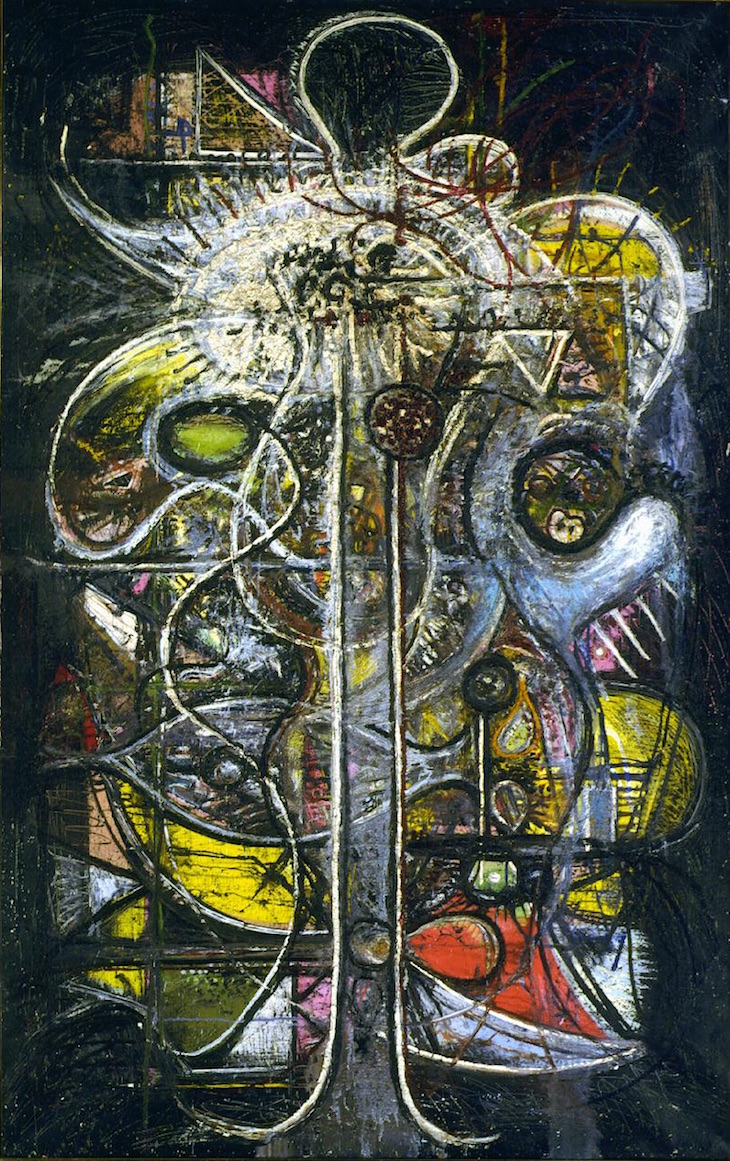
Unlike Pollock or Rothko, Pousette-Dart developed no single signature style. While his contemporaries moved on from their early explorations into myth and symbol, Pousette-Dart’s quest for the spiritual alienated him from the mainstream. His outsider position was reinforced by his decision, just as the phenomenon of Abstract Expressionism was reaching its zenith, to leave the city for the mountainous countryside of New York State, where he worked for the rest of his life.
There, he became increasingly preoccupied with trying to evoke the universal, progressing from the densely gestural paintings of the 1940s to monumental, pointillist canvases and series in which large, minimalist circles and globes pulsate upon highly-textured grounds. These later works on display are impersonal and transcendent, exactly as he wanted them to be. ‘I paint not with my brush but with my Soul, not upon the canvas but upon time and space,’ he wrote to Jim Ede.
Ramapo Mist (1969), Richard Pousette-Dart. Whitney Museum of American Art, New York
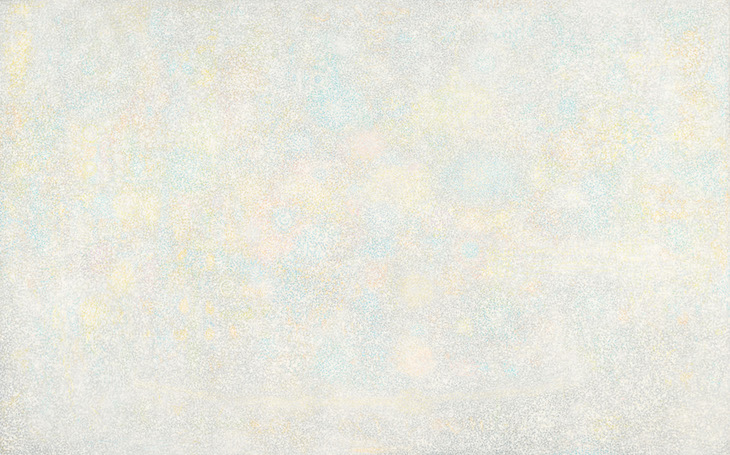
Richard Pousette-Dart believed that the making of art and appreciation of simple abstract forms could transport people beyond their physical experience. His paintings are full of what could be luminous cosmic dust or distant galaxies. They are at once ineffable yet somehow accessible to all.
‘Richard Pousette-Dart: Beginnings – A Young Abstract Expressionist in New York’ is at Kettle’s Yard, Cambridge until 6 January 2019.

